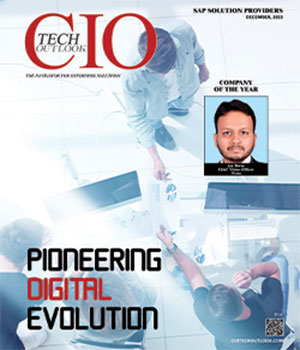
Real World Experiences and Lessons Learned With SAP HANA and S4HANA Enterprise Management
David Whittle, CIO, Bokanyi Consulting
 SAP HANA and S/4HANA Enterprise Management are the hottest buzzwords in the business application world today. Aside from the marketing hype, how do SAP HANA and S/4HANA Enterprise Management benefit businesses today, and how can CIOs take advantage of the technology while avoiding some pitfalls of its deployment?
SAP HANA and S/4HANA Enterprise Management are the hottest buzzwords in the business application world today. Aside from the marketing hype, how do SAP HANA and S/4HANA Enterprise Management benefit businesses today, and how can CIOs take advantage of the technology while avoiding some pitfalls of its deployment?
What is HANA and S/4HANA Enterprise Management, and how do they relate to each other? HANA is the underlying 4th generation platform that powers S/4HANA Enterprise Management. HANA is an in-memory computing platform that delivers greater compression of data than traditional relational databases, and a turbo-boost in speed for transactional recording and business analytics. S/4HANA Enterprise Management is the next generation of SAP’s Enterprise Resource Planning (ERP) flagship software (note, for the rest of the article, S/4HANA Enterprise Management shall be referred to simply as S/4HANA). S/4HANA leverages HANA as the platform (in place of traditional relational databases) to deliver a new, simplified user experience, with apps (called Fiori) that work on most popular devices. S/4HANA also offers new native business analytics capabilities with its graphical Lumira solution, and is compatible with many other popular business intelligence tools.
To many SAP customers, S/4HANA delivers on the promised benefits of the in-memory HANA computing platform. While the traditional SAP ERP solution–Enterprise Central Component (ECC 6.0)–has been around for over a decade and has been the tried and true reliable Cadillac of ERP systems, S/4HANA takes over the flagship position in the next generation business application solutions.
Many things have changed in the last decade, from consumerization of IT, to a vast new world of Internet of Things. These trends drive the adoption of S/4HANA as the new vehicle to allow businesses to thrive today and in the future. Our customers have seen users demand simpler applications, as well as accelerated information delivery, in any mode or location with various mobile devices. S/4HANA provides these much-needed capabilities in the new platform. Slowly and inevitably, technologies like S/4HANA will be the new normal for business applications to meet the needs of the new digital workforce as well as digital consumers.
So as a CIO, what are the lessons learned and real world experiences from SAP customers who have deployed HANA and S/4HANA?
Here are three key takeaways that our customers have learned that may not yet be well understood by most executives: First key takeaway–HANA and S/4HANA will result in initial great er up-front hardware costs (note, a 2014 Forrester study projects a 37 percent cost savings in the long run with SAP HANA). Because HANA and S/4HANA run in-memory, the HANA servers will need more memory than ever. SAP recommends at least a 256GB RAM server for a production S/4HANA deployment, with RAM going up from there as the amount of transactional volume increases.
Fortunately, the actual data sizes in S/4HANA are greatly reduced compared to traditional relational databases. SAP states a data compression of up to 10 times smaller data footprint, due to its columnar design, simplified ERP architecture, and elimination of aggregates and indexes compared to traditional relational databases.
Our customers have found additional ways to reduce hardware costs. For development (DEV) and quality assurance (QA) environments, it is not necessary to run 256GB HANA servers. Some customers have DEV and QA systems running on smaller 160GB servers (hosting both HANA and app servers) which reduce the hardware cost. In addition, we have customers who run DEV and QA HANA systems in a combined 224GB HANA server, which is connected to separate 16GB DEV and QA application servers. These strategies can help reduce up-front hardware costs for S/4HANA deployments and pilots.
Second key takeaway–existing customers find it beneficial to deploy S/4HANA in a phase approach, starting with a pilot deployment.Customers on ECC 6.0 environments and older versions would be well advised to try out S/4HANA in a controlled approach–putting a small, limited part of the business on S/4HANA first. This allows the IT, functional and application support & development groups to get exposure to HANA and S/4HANA, and learn the technology in a methodical manner. Once the pilot is successful, it is much easier to deploy S/4HANA and HANA to the rest of the business with a core group of S/4HANA and HANA experts in-house.
S/4HANA is a fairly new solution from SAP, built on the ultra-reliable and proven power of the ECC 6.0 framework. As this is a fairly new solution, understand that new developments and enhancements are rolled out at a dizzying pace. For example, one of our customers started deployment of S/4HANA Finance in the summer of this year. By the time our customer successfully went live in November, SAP already rolled out a new version of S/4HANA encompassing supply chain and operational enhancements. This should not discourage you from thinking about rolling out S/4HANA. Instead it reflects well on the commitment and the investment SAP is making in S/4HANA to deliver a truly outstanding product that will be the flagship of the future.
Thirdkey takeaway–SAP offers the traditional on-premise version of HANA andS/4HANA, as well as a much-marketed cloud version, called S/4HANA, cloud edition. This is a public cloud edition, offering all the benefits of a cloud solution, such as Infrastructure as a Service (IaaS), data centers, and security qualities as most other public cloud services. As a public cloud offering, it also has some limitations on solution scope and customization associated with most public cloud services.
The deployment choices you make for on-premise, private cloud, or SAP public cloud option will determine the benefits and limitations of the solution lifecycle in your company. Customers who are comfortable with on-premise installations of SAP ECC 6.0 will also find it very similar to host their own HANA and S/4HANA systems. Our technical consultants as well as our customers have found HANA and S/4HANA system management to be easy and efficient. For example, managing a HANA system is an easy task using SAP’s graphical HANA Studio tool. These and other user-friendly applications means CIOs have flexibility and options when it comes to deployment choices.
In summary, CIOs must understand that HANA and S/4HANA are not merely the technology of the future. They are here today and the competitive environment from employee demands, customer demands, and partner demands make it increasingly important to evaluate and come up with a methodical approach to adopting these new SAP solutions.
CIO Viewpoint
Gen AI: Transforming Cloud Solutions for...
By Matt Yanchyshyn, VP - AWS Marketplace & Partner Services, AWS
Upcoming Technological Advancements in Payments...
By Pinak Chakraborty, CIO of Airtel Payments Bank
Shaping the Future of AI: Talent, Innovation,...
By Yann LeCun, Chief AI Scientist at Meta
CXO Insights
Prasa: A Pioneer in Offering Precise Solutions...
By Jay Burse, Chief Vision Officer
SAP, the Digital Future Navigating Business...



.jpg)
.jpg)






